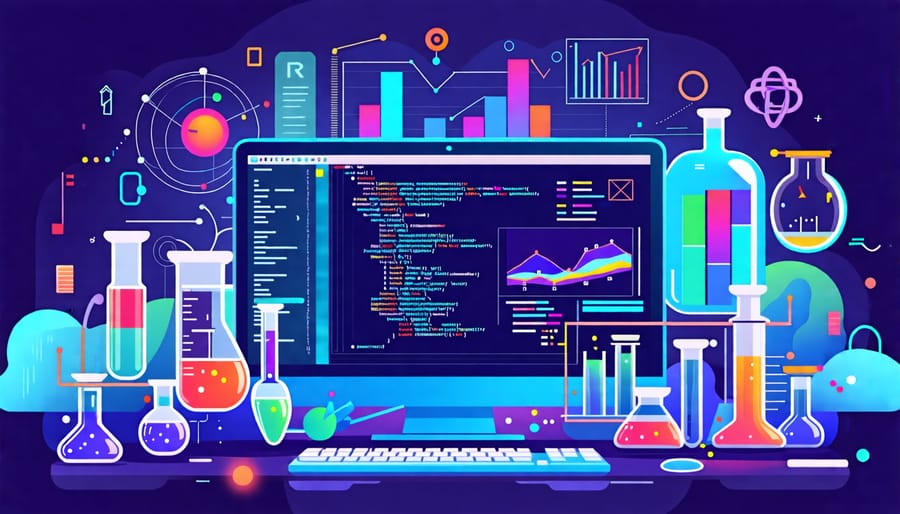Delve into the latest technological breakthroughs with a discerning eye. Analyze how cutting-edge innovations are shaping Earth Sciences by exploring advancements like remote sensing and AI-driven modeling, which enhance our understanding of climate change and natural resource management. Investigate emerging physics phenomena such as quantum computing and its potential to revolutionize data processing, delivering exponential improvements in computation speed and problem-solving capabilities. In education, embrace digital tools that transform learning environments, such as immersive virtual reality experiences and AI-powered personalized …
Harnessing Batteries: The Bright and Dark Sides of Energy Storage
Evaluate the cost-effectiveness of battery energy storage systems by analyzing installation expenses and potential savings on electricity bills. Assess environmental impact, noting that these systems can facilitate the integration of renewable energy sources and contribute to reduced carbon emissions. Investigate the reliability and efficiency improvements, highlighting advancements in battery technology that enhance energy storage and retrieval. Consider limitations, such as lifespan and recycling challenges, to fully understand the implications of adopting this technology in various applications.
How Battery Energy Storage …
Innovative Tools Transforming Science Education Today
Harness digital platforms like online learning management systems to streamline course delivery in Earth Sciences and Physics. Utilize virtual lecture tools, such as Zoom or Microsoft Teams, to facilitate interactive, real-time discussions and foster a collaborative environment among university students.
Implement interactive technologies to enrich the classroom experience. Platforms like Kahoot! and Quizlet can gamify learning, making complex scientific concepts more accessible and engaging for students. Additionally, tools like virtual labs enable hands-on experimentation in a safe, scalable digital format.
Leverage data …
Harnessing the Ocean’s Power: The Future of Marine Solar Energy
Explore the potential of harnessing the sun’s power on our oceans by understanding marine solar power systems. Develop an appreciation for how these innovative systems convert sunlight into electricity through floating solar panels, overcoming the challenges of harsh marine environments. Recognize the significance of recent advances, such as enhanced panel durability and efficient energy conversion technologies, driven by ongoing research and development efforts. Investigate real-world applications like powering marine research stations, desalination plants, and offshore oil rigs, showcasing the versatility and sustainability of these …
What Simmering Water Really Looks Like: A Visual and Scientific Exploration
Observe the tiny bubbles: Simmering water exhibits small, gentle bubbles that rise slowly, unlike the vigorous, rolling bubbles of boiling water. Maintain a temperature range: Keep the water temperature between 185°F and 205°F (85°C – 96°C) for the perfect simmer, preserving the ingredients’ integrity while allowing flavors to meld. Use a thermometer: Confirm the water’s temperature with a culinary thermometer to ensure it doesn’t exceed the simmering range, preventing overcooking. Distinguish the sound: Listen for a soft, steady noise, as simmering produces a quieter hum compared to the roar of boiling, …
Unlocking Earth’s Secrets: Recent Prehistoric Discoveries and What They Mean for Science
Uncover groundbreaking prehistoric discoveries by exploring recent fossil findings that redefine our understanding of Earth’s ancient past. Delve into interdisciplinary collaborations where universities and research institutions unite internationally, leveraging innovative technologies like 3D imaging and carbon dating to unveil secrets buried for millennia. Engage with insights from leading researchers, such as Dr. Jane Ellis, who reveals how the latest excavations in Central Asia offer new perspectives on evolutionary biology. Apply these revelations to modern earth sciences, where each discovery not only reshapes academic …
Unlocking Solar Power: How Efficient Is It, Really?
Evaluate the efficiency of solar energy by examining photovoltaic cell advancements, which have significantly improved energy conversion rates from sunlight to electricity. Investigate solar panel technologies, like monocrystalline and polycrystalline, highlighting which offers the best performance for specific needs and climates. Assess the real-world applications of solar energy advancements, focusing on how they integrate with existing systems to optimize energy use. Consider future prospects for solar energy by exploring cutting-edge research and technologies that aim to push efficiency boundaries further. For more on sustainable …
Harnessing Earth’s Power: A Simple Guide to Geothermal Energy Diagrams
Examine the core elements of geothermal energy systems by following a simple diagram that illustrates the flow from beneath the Earth to your home. Identify the key components: a heat source, usually deep underground, heat pumps on the surface, and a distribution system to deliver warmth. Understand each element’s role in transforming heat from miles below into usable energy, showcasing why geothermal is efficient and sustainable. Apply this knowledge by exploring real-world applications, from residential heating to industrial usage, and recognize its growing importance in the transition to renewable energy. Discover more through the…
Master Machine Learning with R: A Step-by-Step Tutorial for Scientists and Researchers
Leverage R for your machine learning projects by mastering these essential techniques. First, employ libraries like caret and randomForest to streamline model training and evaluation, tailoring algorithms to suit your data’s complexity. Next, utilize R’s robust visualization tools, such as ggplot2 or lattice, to uncover intricate patterns hidden in your datasets, enhancing interpretability and ensuring data-driven insights. Third, integrate cross-validation methods to verify model robustness, preventing overfitting and ensuring reliable predictions in real-world applications. Finally, explore R’s capacity for handling …
The Quantum Question: Is AI Harnessing the Power of Qubits?
Unlock the secrets behind artificial intelligence (AI) and quantum computing, two revolutionary technologies that are shaping our future. While AI has made remarkable strides in recent years, enabling machines to learn, reason, and make decisions like never before, quantum computing promises to supercharge these capabilities by harnessing the mind-bending properties of quantum mechanics. Quantum computing could potentially solve complex problems that are intractable for classical computers, opening …










